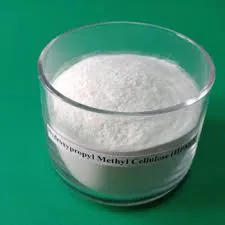
Дек . 19, 2024 06:55 Back to list
hpmc for detergent
HPMC for Detergent An In-depth Analysis
Hydroxypropyl Methylcellulose (HPMC) is a versatile, biodegradable polymer derived from cellulose. Its unique properties make it increasingly popular across various industries, particularly in the formulation of detergents and cleaning products. As consumers become more eco-conscious and seek products that deliver superior performance, HPMC emerges as a favorable ingredient, offering both functional and environmental benefits.
The Role of HPMC in Detergents
HPMC plays several crucial roles in detergent formulations. One of its primary functions is as a thickening agent. In liquid detergents, the viscosity of the solution can significantly impact the product’s efficacy, ease of use, and stability. HPMC contributes to the desired thickness, providing a more cohesive and user-friendly product. This thickening property helps to suspend active ingredients evenly, ensuring optimal cleaning efficacy with each use.
Additionally, HPMC enhances the stability of detergent formulations. As a stabilizer, it helps maintain consistency and prevent phase separation. In products containing various surfactants and other ingredients, HPMC can act as a protective colloid, ensuring that these components remain evenly distributed throughout the product’s shelf life. This stability is crucial, not just for the performance of the detergent, but also for meeting consumer expectations regarding product reliability and effectiveness.
Eco-Friendly Properties
The increasing demand for sustainable products has prompted manufacturers to prioritize biodegradable ingredients. HPMC is derived from cellulose, which is a natural polymer, making it a more environmentally friendly alternative compared to synthetic polymers. It is biodegradable and does not contribute to environmental pollution when disposed of correctly. This attribute aligns with the global trend towards sustainability, as consumers seek out products that are not only effective but also responsible.
hpmc for detergent

Furthermore, HPMC is non-toxic and safe for use in household products, making it suitable for a wide range of applications. This safety profile allows manufacturers to target various market segments, including products designed for children and individuals with sensitivities.
Enhancing Cleaning Power
In addition to thickening and stabilizing, HPMC also enhances the cleaning power of detergents. Its molecular structure allows it to interact effectively with both dirt and surfaces, ensuring that stains are lifted easily during the washing process. HPMC can improve the wetting properties of detergents, allowing the active cleaning agents to penetrate fabrics more efficiently. This characteristic not only boosts cleaning effectiveness but can also lead to reduced amounts of detergent required per load, further promoting sustainability by minimizing product usage.
Challenges and Considerations
While HPMC offers numerous advantages, there are certain challenges to consider when incorporating it into detergent formulations. Manufacturers must balance the concentration of HPMC to achieve the desired viscosity without compromising the performance of other active ingredients. Additionally, the cost of HPMC relative to other thickening agents can be a consideration for some manufacturers, particularly in highly competitive markets.
Conclusion
In conclusion, Hydroxypropyl Methylcellulose (HPMC) represents a vital component in the formulation of modern detergents. Its multifunctional properties as a thickener and stabilizer, combined with its eco-friendly characteristics, make it a valuable ingredient in the detergent industry. As demand for effective and sustainable cleaning products continues to rise, HPMC is poised to play an integral role in the evolution of detergent formulations, meeting both consumer needs and environmental expectations. As manufacturers innovate and explore the full potential of HPMC, the future of sustainable detergents looks promising, with HPMC at the forefront of this transition.
-
Versatile Hpmc Uses in Different Industries
NewsJun.19,2025
-
Redispersible Powder's Role in Enhancing Durability of Construction Products
NewsJun.19,2025
-
Hydroxyethyl Cellulose Applications Driving Green Industrial Processes
NewsJun.19,2025
-
Exploring Different Redispersible Polymer Powder
NewsJun.19,2025
-
Choosing the Right Mortar Bonding Agent
NewsJun.19,2025
-
Applications and Significance of China Hpmc in Modern Industries
NewsJun.19,2025







